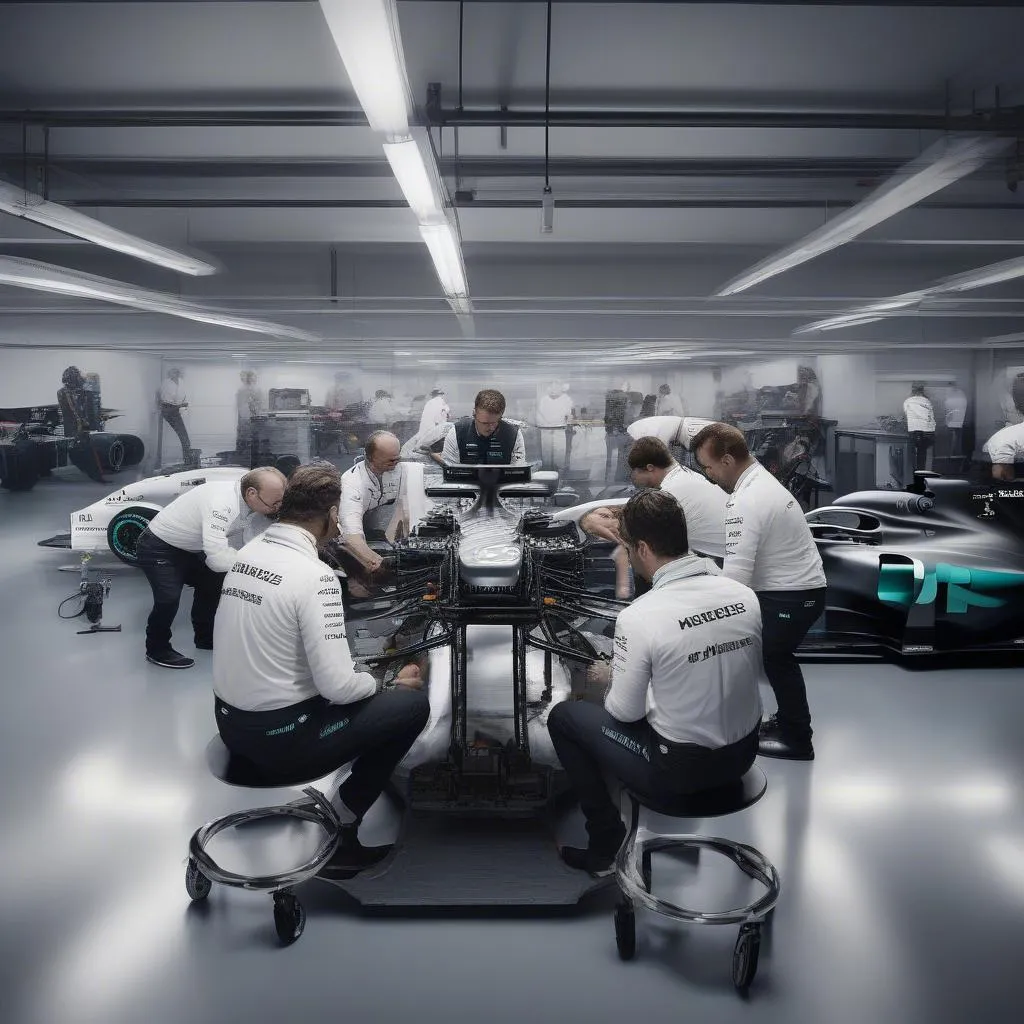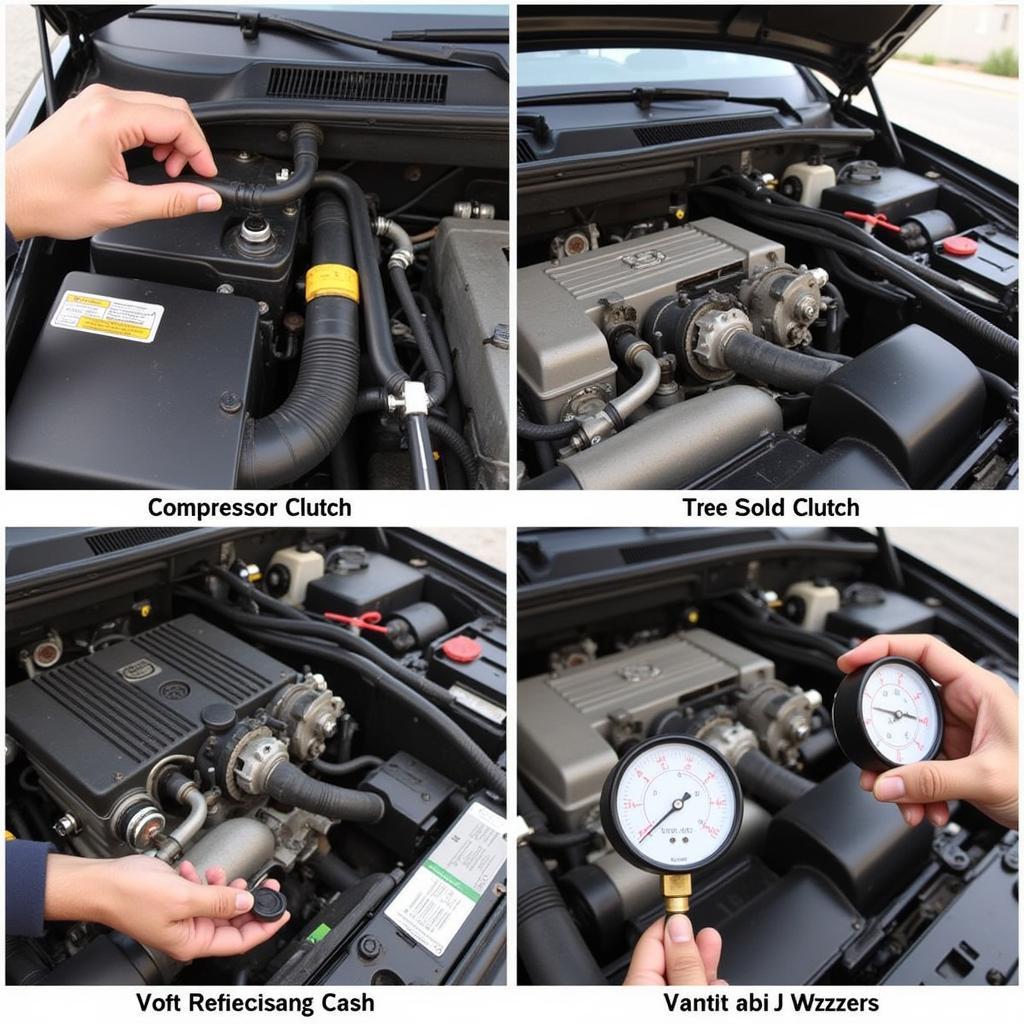The 2022 Formula 1 season saw the rise of a new phenomenon: porpoising. This aerodynamic issue, caused by the new ground-effect car design, plagued many teams, but Mercedes seemed to suffer the most. Their once-dominant W13 car bounced violently on the straights, impacting performance and driver comfort. So, how did Mercedes fix their porpoising problem? Let’s delve into the technical solutions.
Understanding the Root of the Porpoising Problem
Porpoising stemmed from the way the new 2022 F1 cars generated downforce. The ground-effect design, while incredibly efficient, created a powerful suction effect under the car. This suction could become so strong that it would pull the car towards the ground. As the gap closed, airflow would stall, causing the downforce to disappear and the car to rise again. This cycle would repeat rapidly, creating the bouncing effect known as porpoising.
Identifying the Telltale Signs of Porpoising
Porpoising was hard to miss. Visually, the car would bounce noticeably on the straights. Drivers experienced discomfort and a loss of control at high speeds. From a technical standpoint, data analysis revealed rapid fluctuations in ride height and aerodynamic performance.
Tools of the Trade: What Mercedes Needed
To combat porpoising, Mercedes didn’t need a magic wand, but rather a combination of sophisticated tools and engineering expertise. These included:
- Advanced Simulation Software: To model and understand the complex airflow underneath the car.
- Wind Tunnel Testing: To validate design changes and assess their impact on porpoising.
- Trackside Data Analysis: To monitor and analyze the car’s behavior in real-time during testing and races.
The Mercedes Solution: A Multi-Pronged Approach
Mercedes tackled porpoising with a series of carefully considered adjustments:
1. Raising Ride Height
The most immediate fix was to raise the car’s ride height. While this reduced the ground effect and slowed the car down, it provided some relief from the violent bouncing.
2. Floor Modifications
Mercedes experimented with numerous floor modifications, including:
- Reshaping the floor edges and diffuser: To alter the airflow and reduce the intensity of the ground effect.
- Adding vortex generators: These small fins helped to manage airflow and stabilize the car.
3. Suspension Tuning
Stiffer suspension settings helped to control the car’s vertical movement, minimizing the triggering of porpoising.
4. Aerodynamic Adjustments
Beyond the floor, Mercedes made changes to the front and rear wings, as well as the car’s overall aero balance, to find a more stable platform.
 Mercedes F1 Car Floor
Mercedes F1 Car Floor
Did Mercedes Completely Eradicate Porpoising?
While Mercedes made significant progress, porpoising remained a challenge throughout the 2022 season. The team’s continuous development and fine-tuning helped them to manage and minimize the issue, but complete eradication proved elusive.
“Porpoising is a complex issue with no easy fix,” explains automotive engineer, Dr. Emily Carter, author of “Aerodynamics in Motorsport.” “Mercedes’ approach demonstrates the iterative nature of motorsport engineering, requiring constant adaptation and refinement.”
 Mercedes F1 Engineers Working
Mercedes F1 Engineers Working
FAQs: What You Need to Know
Here at Cardiagtech, we get a lot of questions about porpoising and its implications. Here are some of the most common:
- Can porpoising damage the car? While not inherently dangerous, prolonged and severe porpoising can lead to component wear and potential failures.
- Did other teams experience porpoising? Yes, most teams were affected to some degree, but Mercedes seemed to be particularly susceptible.
- Have the 2023 regulations solved the porpoising problem? The FIA has implemented aerodynamic regulation changes for 2023 aimed at reducing porpoising, including raising the floor edges.
A Testament to Engineering Prowess
Mercedes’ journey to tame porpoising underscores the intricate and demanding nature of Formula 1. It’s a testament to the team’s engineering prowess and unwavering pursuit of performance. While the 2022 season brought unexpected challenges, it also served as a catalyst for innovation, pushing the boundaries of motorsport technology.
For more insights into automotive technology and solutions, explore CARDIAGTECH’s range of products and services. We’re dedicated to providing you with the knowledge and tools to stay ahead in the ever-evolving world of vehicles.

